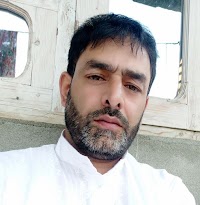Our Past II | JANDKNCERT
Eighteenth Century Political Formation | History VII | Questions and Answers
Chapter 8: Eighteenth Century Political Formation
Let’s Recall
Question 1. Match the following:
Answer:
|
Column
A |
Column
B |
|
subadar |
provincial governor |
|
faujdar |
a
Mughal military commander |
|
ijaradar |
a revenue farmer |
|
kunbis |
Maratha
peasant warriors |
|
umara |
a high noble |
|
chauth |
tax
levied by the Marathas |
|
misls |
a band of Sikh warriors |
Question 2. Fill in the
blanks:
Answer:
(i) Aurangzeb fought a
protracted war in the Deccan.
(ii) Umara and jagirdars constituted powerful sections of the Mughal administration.
(iii) Asaf Jah founded the Hyderabad state in 1724.
(iv) The founder of the Awadh state was Sa’adat Khan.
(v) Under Ranjit Dev, Jammu was called the City of Temples.
Question 3. State
whether True or False:
Answer:
(i) Nadir Shah invaded
Bengal. – False
(ii) Sawai Raja Jai Singh was the ruler of Indore. – False
(iii) Guru Gobind Singh was the tenth Guru of the Sikhs. – True
(iv) Poona became the capital of the Marathas in the eighteenth century. – True
Question 4. What were
the offices held by Sa'adat Khan?
Answer: Sa’adat Khan held the offices of (i) subadar, (ii) diwan, and
(iii) faujdar of Awadh. These roles gave him both civil and military authority
in the region.
Question 5. Write down
the achievements of Ranjit Dev.
Answer:
(i) He maintained peace and order in Jammu.
(ii) He encouraged agriculture and trade.
(iii) He promoted religious tolerance.
(iv) Under his reign, Jammu was called the "City of Temples."
Question 6. Write down
the achievements of King Nima Namgyal.
Answer:
(i) King Nima Namgyal defended Ladakh from external invasions.
(ii) He encouraged the spread of Buddhism.
(iii) He supported the construction of monasteries.
(iv) His rule brought peace and spiritual growth to the region.
Let’s
Discuss
Question 7. Why did the
Nawabs of Awadh and Bengal try to do away with the jagirdari system?
Answer: The jagirdari system led to inefficiency, corruption, and Mughal
interference. (i) The Nawabs wanted more control over revenue and
administration. (ii) They also aimed to reduce the power of jagirdars and
centralize authority in their hands.
Question 8. How were
the Sikhs organised in the eighteenth century?
Answer:
(i) The Sikhs were organised into misls, which were like military brotherhoods.
(ii) Each misl was headed by a leader, and all misls together formed the Dal
Khalsa.
(iii) Eventually, Maharaja Ranjit Singh united them into a powerful kingdom.
Question 9. Why did the
Marathas want to expand beyond the Deccan?
Answer:
(i) They sought wealth and control over rich northern territories.
(ii) Expansion helped them collect chauth and sardeshmukhi taxes.
(iii) They aimed to establish themselves as the successors of the Mughals.
Question 10. What were
the policies adopted by Asaf Jah to strengthen his position?
Answer:
(i) He declared independence while maintaining nominal Mughal loyalty.
(ii) He appointed local officials for administration and revenue collection.
(iii) He maintained a powerful army.
(iv) He avoided confrontation with Delhi to secure his rule over Hyderabad.
Question 11. Do you
think merchants and bankers today have the kind of influence they had in the
eighteenth century?
Answer: No, they do not have the same political influence. (i) In the
18th century, they financed rulers and influenced governance. (ii) Today, while
economically powerful, their role is regulated and mostly confined to commerce
and industry.
Question 12. Did any of
the kingdoms mentioned in this chapter develop in your state? If so, in what
ways do you think life in the state would have been different in the eighteenth
century from what it is in the twenty-first century?
Answer: Yes, the kingdom of Jammu under Ranjit Dev developed in
my state. (i) In the eighteenth century, life was feudal, with limited rights
and primitive technology. (ii) Today, the region enjoys democratic rights,
access to education, better infrastructure, and modern governance.






.webp)




Leave your comment here.